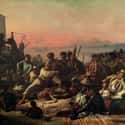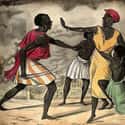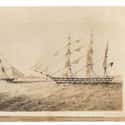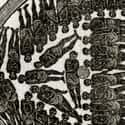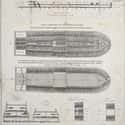-
(#8) Dysentery Was A Major Cause Of Death During The Eight-Week Voyage
The deplorable conditions on slave ships lent themselves to the spread of disease, particularly dysentery, AKA "the flux." In his accounts from his time at sea, slave merchant John Newton describes numerous captives dying due to "the flux," and the fear of outbreaks sweeping over the ship.
One former ship surgeon described the scene thus: "the deck, that is the floor of their rooms, was so covered with the blood and mucus which had proceeded from them in consequence of the flux, that it resembled a slaughterhouse."
Other diseases, including scurvy, influenza, measles, malaria, and smallpox, were also common on ships. With disease around every turn, the mortality rate on slave ships was as high as 15%.
-
(#1) Africans Were Seized In Raids Or Purchased From African Slave Traders
Slavery was part of African society long before the arrival of European slave traders, but the type of slavery practiced in the African tradition was very different. Captives were traded within the continent as a sign of wealth - they could be debtors, prisoners of war, or political prisoners - but slaves were not chattel. With the influx of Islamic merchants, slaves from Africa were transported to the Mediterranean, and later to the Americas, by European merchants.
When Europeans arrived in Africa, they first tried to raid the area themselves. This didn't prove a successful practice, so Europeans began buying enslaved people from African slave traders in places like the kingdom of the Kongo. Soon, African traders started raiding nearby areas to acquire more people to sell to Europeans.
-
(#7) When The Weather Was Bad, Captives Had To Stay Below Deck In The Heat And Stink
Captives were only allowed to go topside when the weather permitted. Otherwise, they stayed in the heat and stench below deck.
With hundreds of people bound together in such a small space, Equiano said things became "absolutely pestilential," as the conditions bred disease among the captives:
The closeness of the place and the heat of the climate, added to the number in the ship, which was so crowded that each had scarcely room to turn himself, almost suffocated us. This produced copious perspiration, so that the air soon became unfit for respiration from a variety of loathsome smells, and brought on a sickness amongst the slaves, of which many died.
-
(#9) The Ships Had 'Suicide Nets' To Prevent People From Jumping Overboard
Given the chance, many enslaved people tried to kill themselves. This could be an act of desperation or defiance - or both. Captives would refuse to eat or try to poison themselves, as recounted by John Newton. They would also try to throw themselves into the sea.
To prevent people from jumping overboard, many ships were outfitted with "suicide nets." Even if someone could get through the nets, many ships would send boats out to bring them back. For the crew, they saw any enslaved person lost along the way as a reduction of profits.
-
(#5) Below Deck, The Odor From Feces, Urine, And Vomit Was Sickening
Olaudah Equiano described what met him when he went below deck:
I was soon put down under the decks, and there I received such a salutation in my nostrils as I had never experienced in my life: so that, with the loathsomeness of the stench and crying together, I became so sick and low that I was not able to eat. I now wished for the last friend, death, to relieve me.
Slaves were sometimes taken above deck and bathed, weather permitting, but the periodic washings were no match for the brutal conditions.
-
(#4) Ships Designed To Carry A Few Hundred People Transported As Many As 700
Slave ships were designed to carry hundreds of people, but were usually over-crowded in the interest of profit. The more slaves on a ship, the more money there was to be made. Captives were packed into the ship so tightly that they had no more than a few feet to move, sit, or sleep. Conditions were so cramped that those enslaved would not have been able to find a bucket to defecate or urinate in, thus forcing them to stay in their own waste.
The Brookes ship, later a key part of the argument against the slave trade, depicted how slaves were to be put below deck and carried on slave ships. Prior to the passage of the Regulation Act of 1788, the Brookes carried over 700 slaves. After the law was passed, regulations restricted the number of captives aboard to about 450.
New Random Displays Display All By Ranking
About This Tool
In August 1619, a Dutch ship carried 20 black slaves to Jamestown, the first colonial stronghold in Britain, which was the earliest black slave trade. The slaves were sent to several tobacco plantations along the coast, and the long history of slavery began. In the modern history of humans, the slave trade was the most shameful and despicable page.
From the Senegal estuary to the Congo estuary, there are slave ships of European colonial countries moored one after another. The jet-black bow of the ship is like an open blood basin that is waiting to devour human flesh. The random tool will help us to know 14 facts about the brutal life on slave ships.
Our data comes from Ranker, If you want to participate in the ranking of items displayed on this page, please click here.










